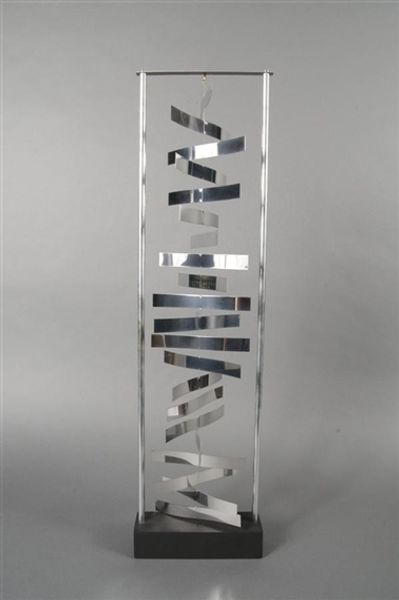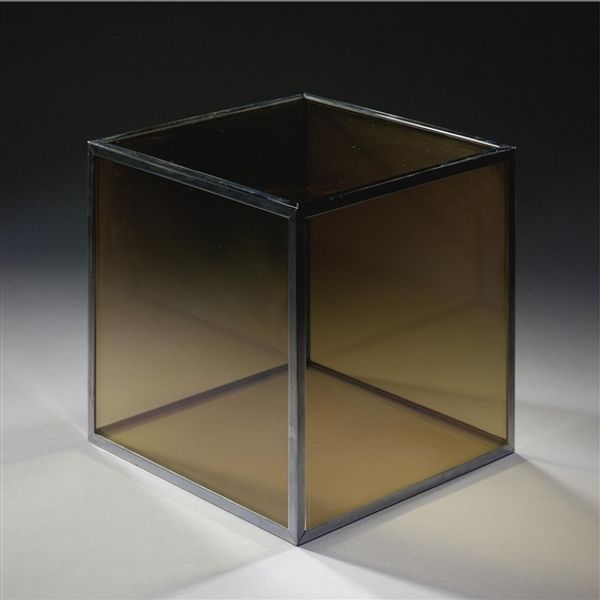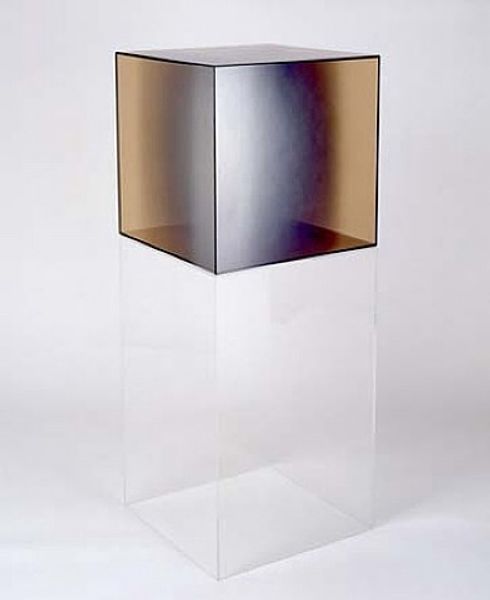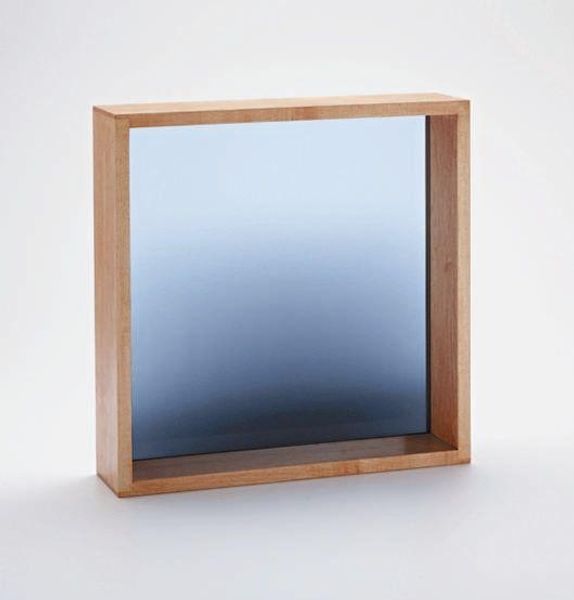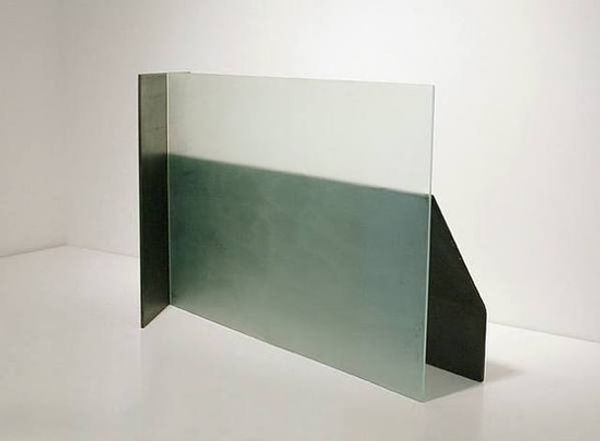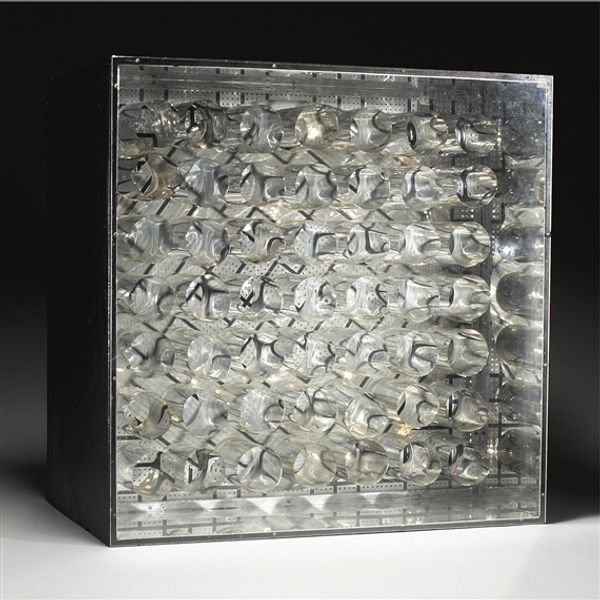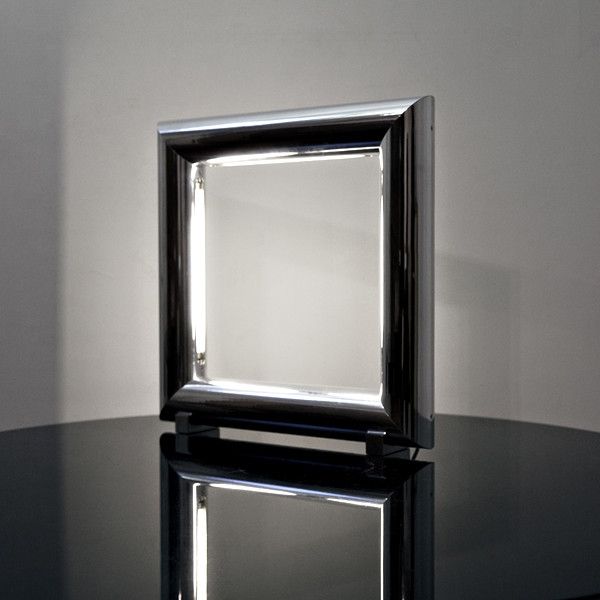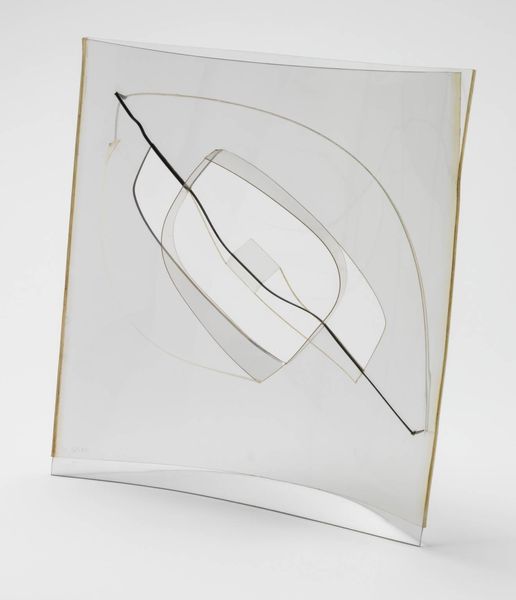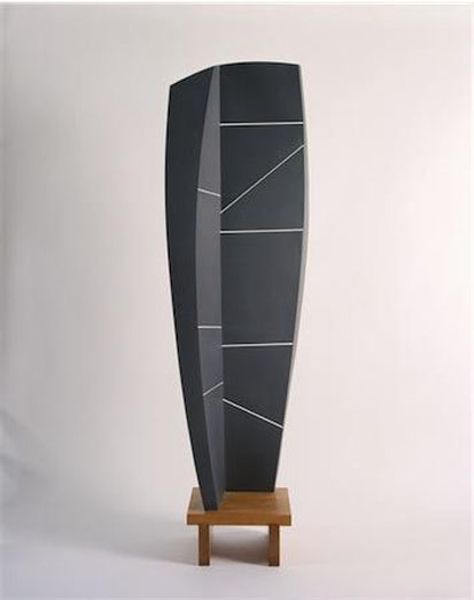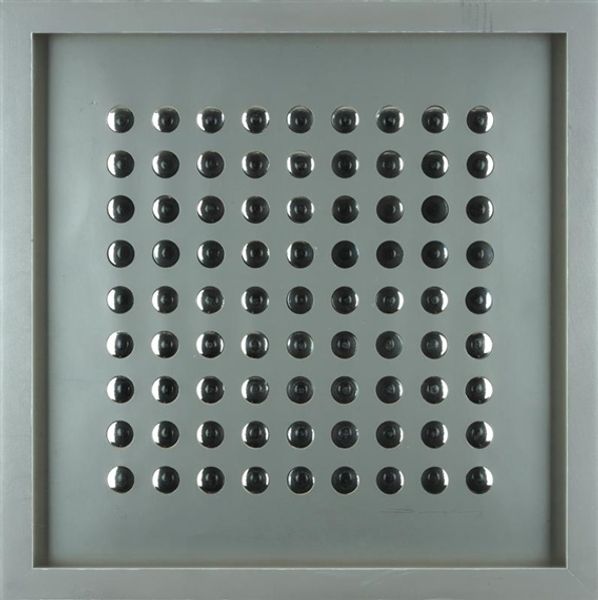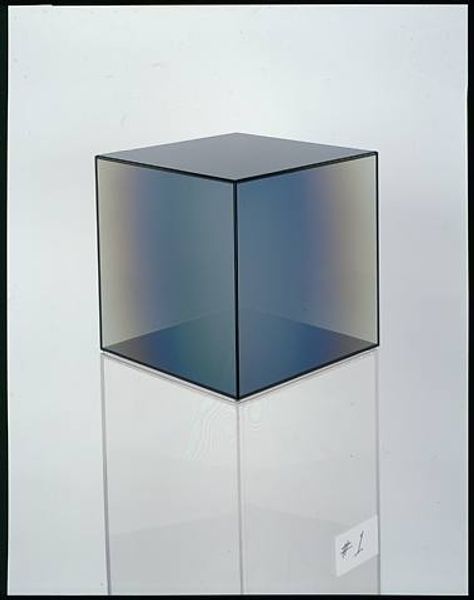
metal, sculpture
#
minimalism
#
metal
#
constructivism
#
form
#
geometric
#
sculpture
#
line
#
hard-edge-painting
Copyright: Tony DeLap,Fair Use
Curator: Immediately I'm struck by this kinetic, almost dizzying quality. Editor: That’s appropriate, given the name. Here we have Tony DeLap's "Keystone," created in 1964. It is primarily constructed from metal. What we’re seeing is a complex interplay of geometric forms. Curator: A keystone locks an entire arch into place—it’s a very potent symbol, isn't it? It gives stability. This sculpture feels both very stable and very precarious. It also seems almost to pulse, radiating outward from the very center, like an opening eye or a... a mandala, perhaps? Editor: I can see that. And what’s interesting is how DeLap destabilizes the clean, rigid geometry of minimalism and hard-edge painting through optical illusion. Curator: Yes! The hard lines and metal could appear cold, even sterile. Instead, it gives a hypnotic quality that really draws me in, but I think its beauty rests upon a cultural belief that shapes are a symbolic reference point. A square’s symbolism rests, perhaps, on the spiritual qualities of what makes a house or the boundaries between heaven and earth. Editor: Well, that makes me consider it from the standpoint of power and hierarchy, a framework shaped by institutional forces rather than purely a spiritual consideration, although of course, these can also go hand in hand. This piece was created during a time of significant political and social change, and so the central point in this, as well as the way it manipulates our perception of space, is to give the suggestion that perhaps things are not always as stable or reliable as we assume. Curator: Absolutely. And, perhaps the symbolic resonance can be found in that destabilization itself. Even as the materials remain solid and fixed. It’s as if the illusion allows us to grapple with change or shifting perspectives on established ideals. Editor: Right. The key is to engage viewers and raise consciousness that the cultural ground under our feet has, and always will be, moving. It has really given me pause about the nature of order itself. Curator: Likewise, it makes me consider the subjective nature of perception, how individual realities form a more significant, culturally shaped consensus.
Comments
No comments
Be the first to comment and join the conversation on the ultimate creative platform.
